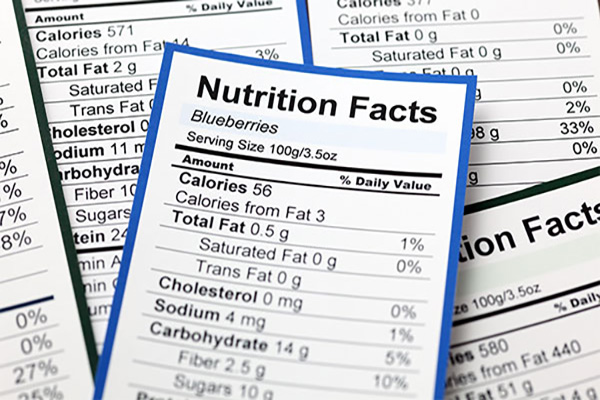If your food is processed and packaged, it should have a label with nutrition facts. This label can guide you toward making healthier choices about what you and your family eat.
The Nutrition Facts information located at the top of the label might vary with each product, but it features “product-specific information” such as calories, serving size and nutrients, according to the Food and Drug Administration (FDA).
First Things First
The first thing you’ll see on the nutrition label is serving size, which is how much of the food – measured in ounces, cups or pieces – you should typically eat at one time, according to the American Academy of Family Physicians. Serving size is important to pay attention to, there may be more than one serving per container. Additionally, eating larger portions means you’ll consume more calories and possibly gain more weight.
Your Daily Value
The organization notes each food label shows the amount per serving for several areas and the percent daily value, which is how much of a particular nutrient is in a single serving of the product compared to the amount of the nutrient you should eat per day. These percentages are based on a diet of 2,000 calories per day, but your actual calorie consumption will depend on your age, gender and level of activity.
The FDA states that larger food packages have a footnote at the bottom of the label with the Daily Values for a 2,000-calorie diet and 2,500-calorie diet. These include the important nutrients, such as fiber, fats and sodium, recommended for your diet.
The Nutrition Facts labels also include the following items:
- Calories
- Total fat/saturated fat/trans fat
- Cholesterol
- Sodium (salt)
- Total carbohydrate/dietary fiber/sugars
- Protein
- Vitamins (A, C) and minerals (calcium, iron)
Some of the ingredients on the label are good for you, while others are bad for you, according to the American Academy of Family Physicians. The good nutrients are fiber, vitamins and minerals. The bad ingredients are saturated fat, which can boost your risk of high cholesterol and heart disease; trans fat, which can increase your heart disease risk; and cholesterol.
The organization suggests that you ask your health care provider about the number of calories you need per day and the appropriate serving size for specific foods; your cholesterol level and what you should be eating if it’s too high; and whether “fat-free” products are recommended for you.




